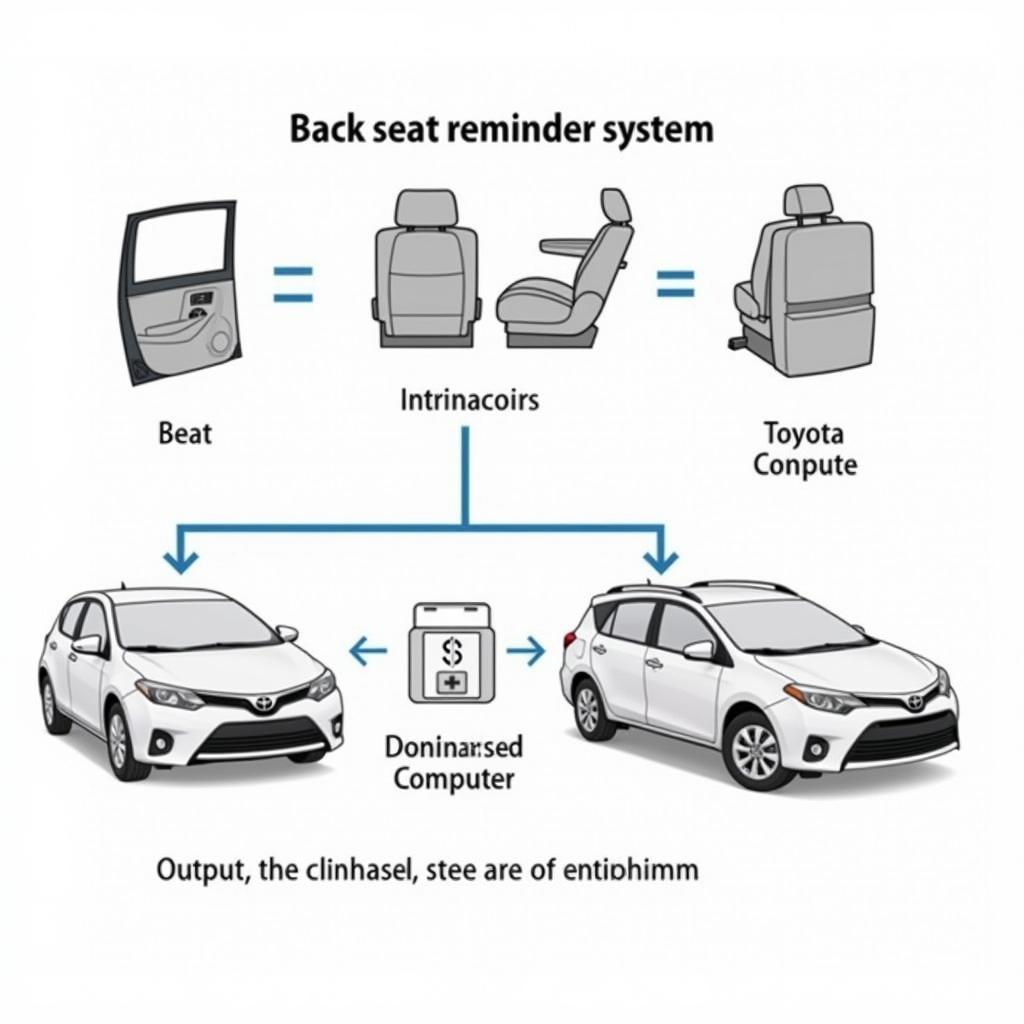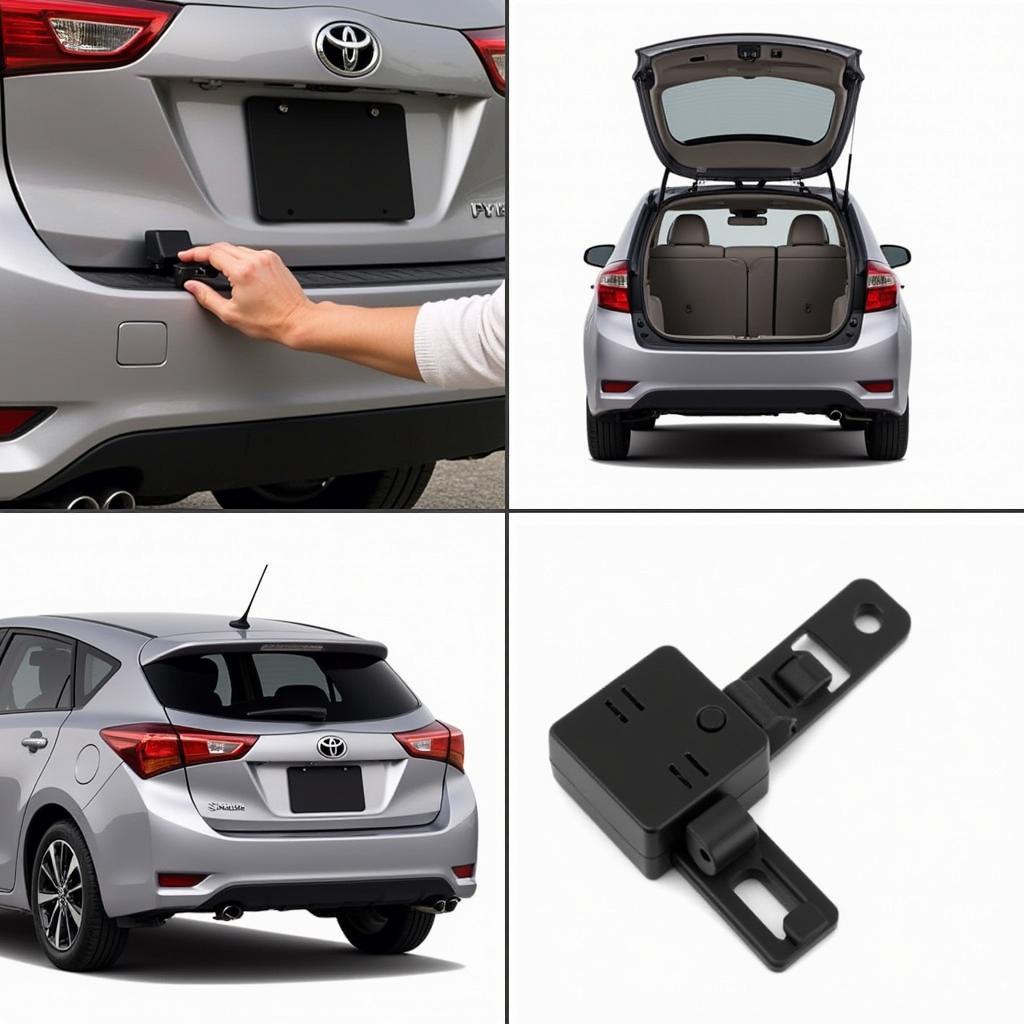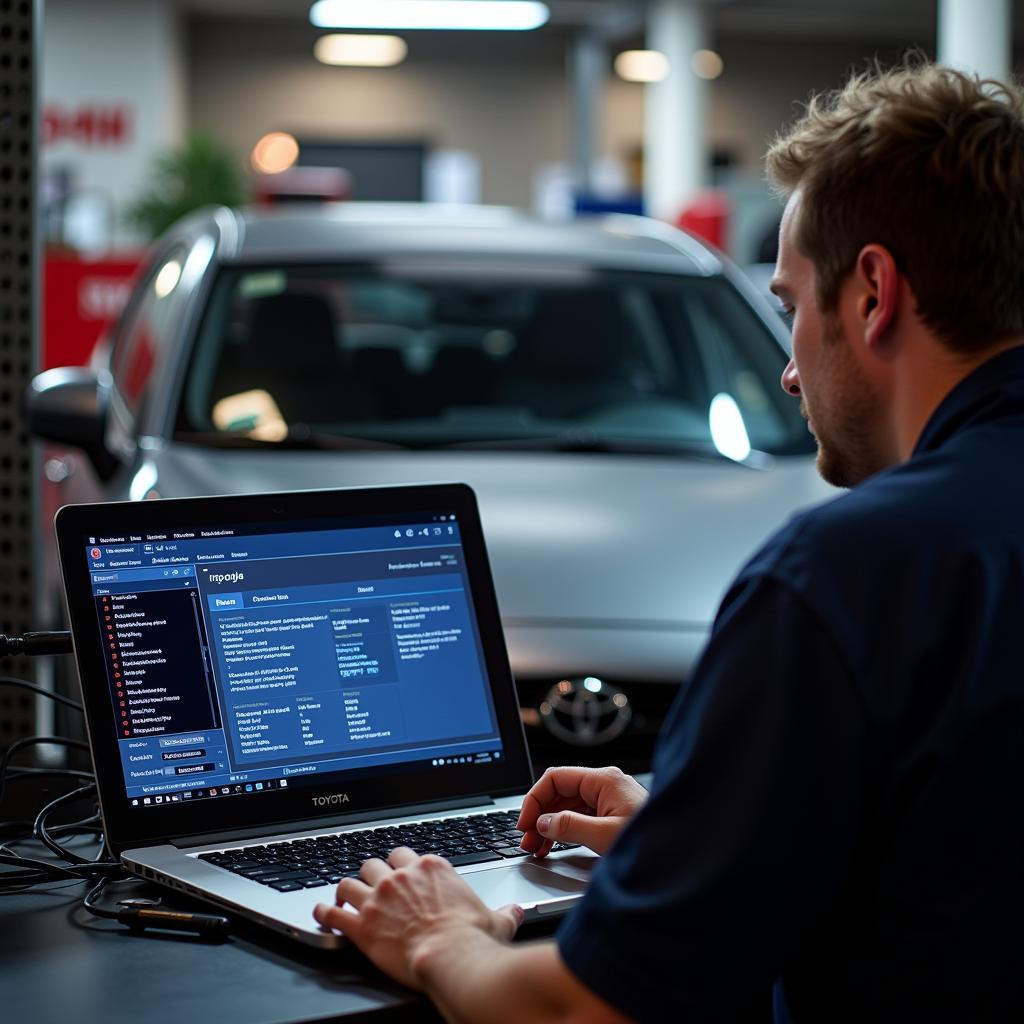The “check back seat warning” in your Toyota is a crucial safety feature designed to prevent children and pets from being accidentally left in the vehicle. This guide delves into the intricacies of this system, offering solutions for troubleshooting, programming, and even remote software installations to address potential issues. Let’s explore everything you need to know about the check back seat warning in your Toyota.
Understanding why your Toyota displays the “check back seat warning” is the first step towards resolving the issue. The system utilizes various sensors, depending on the model and year of your vehicle. Sometimes, a simple software glitch can trigger the alert even when the back seat is empty. In other instances, a faulty sensor might be the culprit. abs traction control brake warning lights all come on.
Understanding the Toyota Back Seat Warning System
The rear seat reminder system is an important safety feature in modern Toyotas. This system, activated when the rear door is opened and closed before the engine is started, uses various methods to remind the driver to check the back seat after the engine is turned off. These methods include visual alerts on the dashboard, audible chimes, and even notifications sent to connected smartphones.
How Does the Back Seat Reminder Work?
Different Toyota models employ various technologies for their back seat reminder systems. Some use door logic, while others utilize weight sensors in the rear seats. Understanding the specific system in your Toyota model will help you pinpoint the source of a malfunctioning warning.
 Toyota Back Seat Reminder System Diagram
Toyota Back Seat Reminder System Diagram
Knowing how the system works is crucial for effective troubleshooting. Is it a weight sensor, or door logic? This information will guide your next steps. For instance, a weight sensor might require recalibration or replacement, whereas a door logic issue could involve checking the door latch switches.
Troubleshooting Common Issues with the Check Back Seat Warning
The “check back seat warning” can sometimes be triggered erroneously. Here’s a breakdown of common problems and how to address them.
False Alarms: What to Do
- Check for Obstructions: Ensure the rear seats are clear of any objects that might trigger the weight sensors. Even a light bag or a jacket can sometimes set off the alarm.
- Inspect the Door Latches: Make sure the rear doors are closing properly and the latches are engaging fully. A faulty latch can send incorrect signals to the system. check rear seat warning toyota.
- Restart the Vehicle: Sometimes, a simple system reboot can resolve the issue. Turn off the engine, wait a few minutes, and then restart the car.
 Checking Toyota Rear Door Latches
Checking Toyota Rear Door Latches
Sensor Malfunction: Diagnosis and Repair
If the problem persists, it could indicate a sensor malfunction. Here’s how to proceed:
- Consult your Owner’s Manual: Identify the location of the back seat sensors in your specific Toyota model.
- Visually Inspect the Sensors: Look for any signs of damage or loose connections. rear seat belt warning.
- Use a Diagnostic Tool (if available): A diagnostic tool can read error codes related to the back seat warning system, pinpointing the faulty sensor.
“A thorough inspection of the sensors is key,” says John Miller, Senior Automotive Diagnostic Technician at AutoTech Solutions. “Even minor damage can disrupt the system’s functionality.”
Remote Software Solutions and Programming
In some cases, the “check back seat warning” issue can be resolved remotely through software updates or programming adjustments. This often requires specialized equipment and expertise.
Remote Diagnostics and Programming
Remote diagnostics allow technicians to access your vehicle’s computer system remotely and identify software-related problems. They can then upload necessary software updates or reprogram the system to resolve the issue. how to turn on the seat belt warning chime.
“Remote software solutions are becoming increasingly common in modern vehicle diagnostics,” explains Maria Sanchez, Lead Software Engineer at CARDIAGTECH. “They offer a convenient and efficient way to address many issues, including the check back seat warning.”
 Technician Performing Remote Diagnostics
Technician Performing Remote Diagnostics
Conclusion
The “check back seat warning” in your Toyota is a vital safety feature. Understanding its operation and troubleshooting common issues can help you maintain its functionality and ensure the safety of your passengers. If you’re unable to resolve the problem yourself, seeking professional assistance from a qualified automotive technician is always recommended. Remember, a functioning back seat warning system contributes significantly to preventing tragic accidents. 2013 sienna seat belt warning beep inop.
FAQ
- Why is my Toyota check back seat warning light on? Several factors can trigger this warning, including objects on the rear seats, faulty door latches, or sensor malfunctions.
- How do I turn off the check back seat warning Toyota? Addressing the underlying issue causing the warning is the correct way to turn off the light, not simply disabling the system.
- Can I disable the back seat reminder in my Toyota? While some models allow adjustments to the sensitivity, completely disabling the system is generally not recommended due to safety concerns.
- How do I reset the check back seat warning? Resolving the underlying issue, such as removing objects from the back seat or fixing a faulty door latch, usually resets the warning.
- What does the check back seat warning look like? It typically appears as a visual alert on the dashboard, often accompanied by an audible chime.
- Is the check back seat warning mandatory? In many regions, this feature is becoming increasingly common in new vehicles due to safety regulations.
- What if the warning persists even after troubleshooting? If you’re unable to resolve the issue yourself, consult a qualified automotive technician for professional diagnosis and repair.
